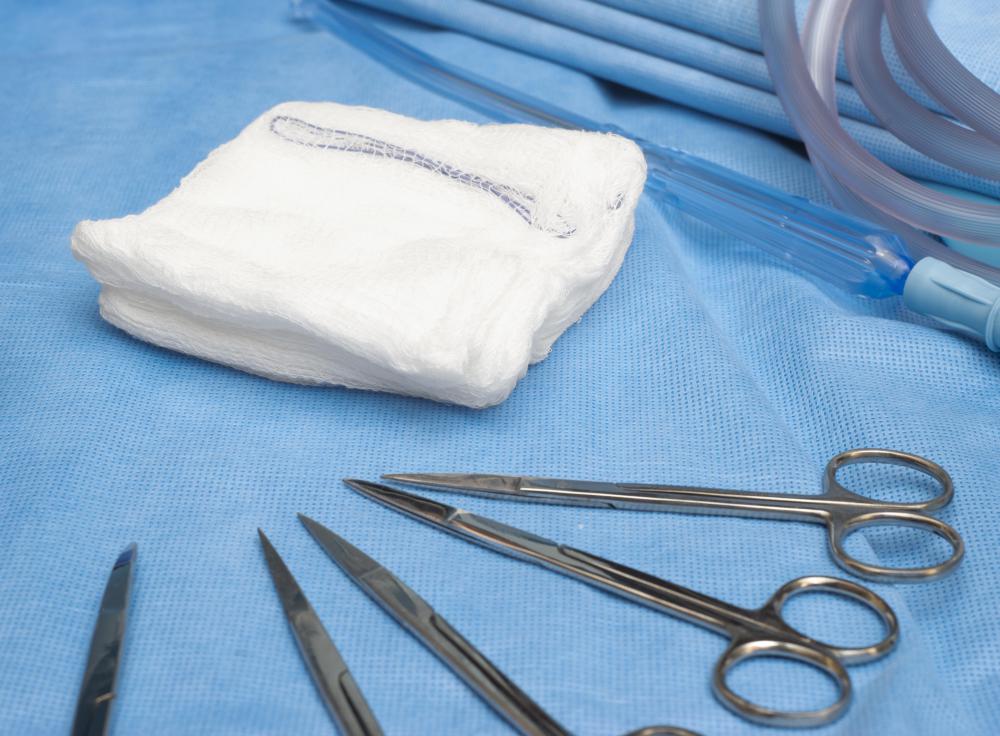At TheHealthBoard, we're committed to delivering accurate, trustworthy information. Our expert-authored content is rigorously fact-checked and sourced from credible authorities. Discover how we uphold the highest standards in providing you with reliable knowledge.
What Is Gossypiboma?
When a sponge or some other surgical equipment is left inside a patient who's undergone surgery, the resulting diagnosis is called gossypiboma. These formations might not appear until years later, when pain or infection become impossible to ignore. Though some characteristics of this disorder are the same as all others, doctors must consider each case individually based on each patient's prior surgical procedures.
Though this phenomemon is rare, medical literature has chronicled many cases of gossypiboma, complete with radiological images. A post-operative patient — often months or even years after surgery — might complain of localized pain at the surgical site, see a cyst that is growing in size, or even suffer symptoms of an internal infection. The symptoms of an internal infection are typically a high fever and other flu-like symptoms like aching and lethargy.

Depending on the type of surgery, gossypiboma could reveal itself in any number of other symptoms. An operation involving the digestive tract, for instance, could lead to intestinal obstruction that causes nausea, vomiting, weight loss and pain. Left behind in the lungs, by contrast, a growth could form that causes severe respiratory difficulty.
Gossypiboma can typically be identified by an x-ray, but follow-up surgery is most often needed to remove the unwelcome surgical instrument. Though sponges appear to be the most common material left behind, several other cases have involved tools like bone curettes, forceps, gauze, scissors, nerve hooks and tissue clamps that can easily be overlooked if not careful. According to a 2008 report by the U.S. Department of Health and Human Services' Agency for Healthcare Research and Quality, about one retained foreign object was left behind out of every 5,500 surgical procedures. This statistic was gleaned after an analysis of nearly 200,000 operations.

When a surgical instrument is left behind, the body's reaction is often to encapsulate the material. Calcification and fat buildup can form around the mass, which eventually might appear as a cyst or tumor. What a doctor initially believes might be an abnormal tissue mass on an x-ray could indeed be the remains of a surgery that, until then, was considered a success.

Radiological tests can easily identify certain instruments like forceps or nerve hooks, but gauze or sponge might be so encapsulated in fat and tissue that it will appear to be a potentially malignant tumor. Most manufacturers of these items in 2011 include radiopaque fibers that can be detected by radiologists. Surgeons and their assistants often count instruments at the end of a procedure before closing up a patient. Some technology like bar coding and radiofrequency detection lets surgeons use a scanner to quickly ascertain if anything has been left inside.
AS FEATURED ON:
AS FEATURED ON:















Discuss this Article
Post your comments